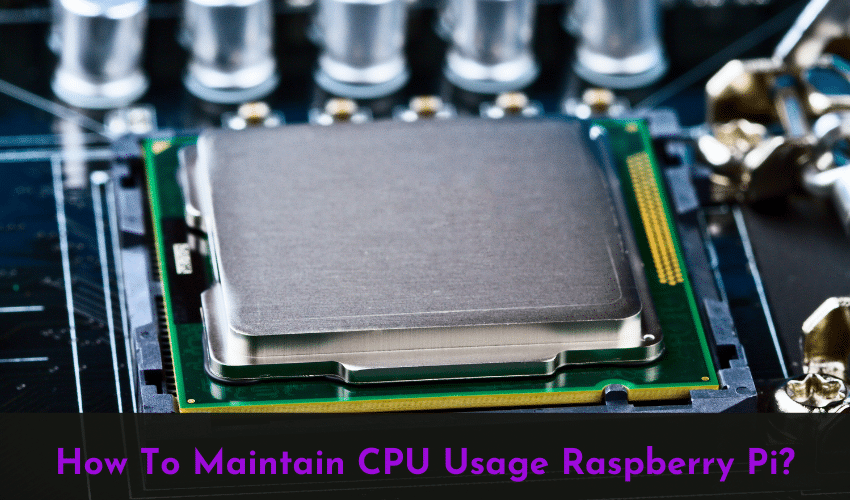Open the Terminal, Enter the Top Command, Interpret the Results, and Exit the Top Command
“Check CPU usage Raspberry Pi” – To check CPU usage on a Raspberry Pi, use the “top” command in the terminal.
This tutorial will discuss checking CPU usage on a Raspberry Pi using the “top” command in the terminal. As Raspberry Pi is commonly used for various tasks like media servers, gaming consoles, and IoT devices, it is essential to monitor CPU usage to ensure optimal performance.
By following the steps outlined in this article, you will be able to monitor the CPU usage of your Raspberry Pi quickly.
What Will You Need: How To Check CPU Usage Raspberry Pi?
To follow this tutorial, you will need the following:
- A Raspberry Pi device
- A keyboard and mouse
- A monitor
- Internet connectivity
- Basic knowledge of using the terminal
There are alternative ways to check CPU usage, such as using GUI-based tools like “htop” or installing monitoring software like “Grafana.”
However, this tutorial will use the “top” command, which is pre-installed on most Raspberry Pi operating systems and provides a simple and quick way to check CPU usage.
Step-by-Step Instructions: How To Check CPU Usage Raspberry Pi?
- Open the Terminal

Open the terminal on your Raspberry Pi by clicking on the terminal icon on the desktop or by using the shortcut Ctrl+Alt+T.
- Enter the Top Command
In the terminal, type the command “top” and press Enter. This will display a real-time view of the CPU usage on your Raspberry Pi.
- Interpret the Results
The top command displays information about CPU usages, such as the percentage of CPU usage by each process, the total CPU usage, and the system’s uptime. Use the F1-F10 keys to access different options to customize the view.
- Exit the Top Command
To exit the top command, press the “q” key.
How To Maintain CPU Usage Raspberry Pi?

To maintain CPU usage on a Raspberry Pi, you can take the following steps:
- Monitor CPU usage: Use the ‘top’ command in the terminal to monitor CPU usage and identify processes using too much CPU time. You can install a system monitoring tool like ‘htop’ for a more detailed view of system performance.
- Close unnecessary programs: Close any programs or services running on the Pi. This will free up CPU resources and improve system performance.
- Optimize startup programs: Review and disable any programs or services that automatically start at boot. This can be done through the ‘raspi-config’ utility or by editing the appropriate configuration files.
- Overclock the CPU: Overclocking can boost the performance of the CPU, but it also increases power consumption and heat output. This should only be done if you are experienced with overclocking and understand the risks involved.
- Use a cooling solution: Overheating can cause CPU throttling and reduce system performance. Ensure that your Raspberry Pi is adequately ventilated, and consider adding a cooling solution like a heatsink or fan.
By following these steps, you can optimize the CPU usage on your Raspberry Pi and improve system performance.
Benefits of Checking CPU Usage Raspberry Pi

Checking CPU usage on a Raspberry Pi can have several benefits:
- Improve system performance: By monitoring CPU usage, you can identify processes that are consuming too much CPU time and causing the system to slow down. You can then take steps to optimize the system and improve overall performance.
- Prevent overheating: Overheating can cause CPU throttling and reduce system performance. By monitoring CPU usage and ensuring that the Pi is adequately ventilated, you can prevent overheating and maintain system stability.
- Save power: By identifying and closing unnecessary programs, you can free up CPU resources and reduce power consumption, especially if you run your Raspberry Pi on battery power.
- Troubleshoot issues: If you are experiencing issues with your Raspberry Pi, checking CPU usage can help you identify the root cause of the problem. For example, if CPU usage spikes when you launch a particular program, this could indicate that the program is causing the issue.
In summary, checking CPU usage on a Raspberry Pi can optimize system performance, prevent overheating, save power, and troubleshoot issues.
Conclusion
Congratulations! You have successfully learned how to check CPU usage on your Raspberry Pi using the top command in the terminal. By monitoring the CPU usage, you can ensure that your Raspberry Pi performs optimally and troubleshoot any performance issues.
If you enjoyed this tutorial, please comment and share it with your friends. Also, consider checking out our premium offer for more advanced Raspberry Pi tutorials.
